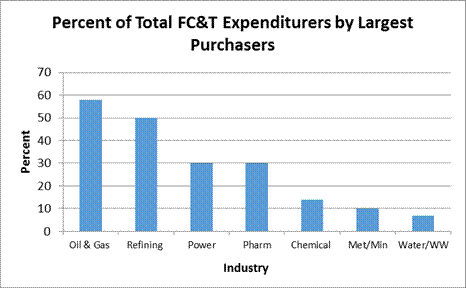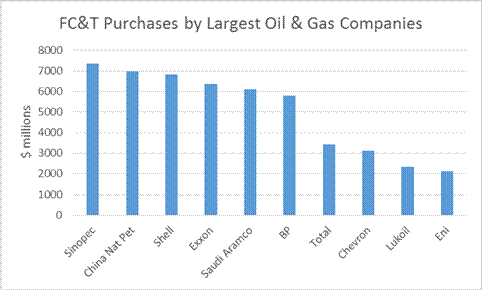
“Dry vs. Wet Cooling” was the Hot Topic Hour on June 5, 2014
The webinar yesterday covered many issues relative to cooling condensed steam in
power plants. It was conducted in a discussion mode with a few presentations to
facilitate the discussions. Panelists included:
Alan Gaulke, AECOM
Jessica Shi, Ph.D.
Senior Technical Leader/Manager Technology Innovation Research for Water
Conservation, EPRI.
William (Bill) F. Harfst
Consultant, Harfst and Associates, Inc.
Terry Dwyer,
SPX Cooling Technologies, Inc.
Barbara Carney
Chemical Engineer, Department of Energy, National Energy Technology
Laboratory (NETL)
Andrew Howell,
Senior Systems Chemist, Xcel Energy
Discussion Question 1.
Why a dedicated website just on Power Plant Cooling?
Bob McIlvaine briefly explained the dedicated Power Plant Cooling
website.
http://www.mcilvainecompany.com/PwrPlntCoolAnalysis/Subscriber/Default.htm
It is one of a number of free sites on narrow subjects
Continuous Analyses. The webinar today and future webinars
on cooling will use this site to facilitate high level discussions and decision
making. One example in the Thursday
webinar was a discussion of China.
Jessica Shi of EPRI was
the only U.S. attendee at a major cooling tower conference in Beijing. Her
question was whether U.S. utilities would consider attending Chinese
conferences.
Andrew Howell of
Xcel Energy was recently in
China. He did not believe that most
utilities in the U.S. would fund such trips. On the other hand,
Kent Marten of
SPX pointed out that his
company is a major supplier of cooling towers in China. There are lots of Air
Cooled Condenser (ACC) units on coal-fired power plants and few on combined
cycle power plants. A recent trend
is toward the Heller type indirect cooling.
Discussion Question 2.
What are the options?
Terry Dwyer and Kent Marten of SPX started the ball rolling with an analysis
of the options. We displayed the following from the website:
SPX offers the range of cooling
options including dry, hybrid and wet. Energy and water usage are major
considerations in selection.
One of the power points which was displayed compares water savings and energy use for various options.

SPX has now designed modular ACC systems. These systems reduce installation costs and time.
Discussion Question 3.
What are some of the potential changes and improvements?
Jessica Shi of EPRI covered some the ongoing
programs to advance dry cooling.

Discussion Question 4.
What should we know about the impending water intake rules?
Alan Gaulke of AECOM highlighted some of the
important aspects.
EPA Administrator McCarthy signed the final version of the rule implementing §
316(b) of the Clean Water Act on May 19, 2014, which will become effective 60
days after it is published in the Federal Register. The rule will affect
existing cooling water intake structures at an estimated 544 electrical
generating facilities and 509 manufacturing facilities and it made minor changes
to the new facility rule that was published in 2001.
The owner or operator of an existing facility must comply with one of the
alternatives in (c)(1) through (c)(7) below:
Discussion Question 5.
Are there CO2 considerations with various dry cooling and hybrid
options? Andy Howell
summarized the situation by stating that while ACC reduces water use it
increases energy consumption, reduces plant output, and increases CO2
emissions.
Discussion Question 6.
What are the water quality issues? Bill Harfst indicated that with
chemical additions the cooling tower cycles of concentration can be increased
from the present 3-4 to as many as 10.
This greatly reduces water use. However, as Barbara Carney pointed
out, the amount of solids discharged remains the same. Bill then pointed out
that final filtration with cross flow membranes and then evaporation of slurries
can eliminate any water discharges. The question is expense.
Discussion Question 7.
How will this effort be coordinated with ACC User Group, CTI, CCJ and other
associations and publications?
§
One example is CCJ coverage of GEA.
Eric Fournier of GEA commented on the range of dry and wet
cooling options available worldwide.
Barbara Carney of NETL pointed out that use of wastewater was an
attractive option. NETL is funding a number of projects. Here are links to some
of the reports.
Black and Veatch
was scheduled to make a presentation but was unable to attend. McIlvaine
displayed the following report on an installation using reclaimed water.
West
County Energy Center (WCEC) Unit 3 is
a world-class, combined cycle combustion turbine project.
West County Power Partners, LLC,
is managing the project for Florida
Power & Light Company (FPL), and
Black & Veatch has a major role in completing the engineering,
procurement, construction and commissioning. With a nominal capacity of 1,250
MW, Unit 3 will contribute to FPL’s highly efficient power plant fleet, which
serves more than 4.5 million customers in Florida.
Unit 3 includes three
Mitsubishi G-Class combustion
turbine generators exhausting into three
Nooter/Eriksen heat recovery steam generators, and one
Toshiba reheat condensing
steam turbine generator, all purchased by FPL. Utilizing its global supply
chain, Black & Veatch was responsible for purchasing all other engineered
equipment. The unit will have the capability for dual fuel operation using
either natural gas or fuel oil.
FPL completed a project in October 2010 to provide
reclaimed water from a local water treatment plant for cooling tower makeup for
all three units. The previous source for makeup water was from Floridan aquifer
deep wells. This project greatly reduces water used from the wells and increases
sustainable practices by putting discharged water from the treatment plant to
better use.
The individual presentations are as follows:
Alan Gaulke of AECOM highlighted some of the important aspects of cooling water
intake structure rules.
Revision Date:
6/5/2014
Tags:
221112 - Fossil Fuel
化石燃料,
AECOM, Cooling Tower, Air Cooled Condenser
Jessica Shi of EPRI covered some the ongoing programs to advance dry cooling.
Revision Date:
6/5/2014
Tags:
221112 - Fossil Fuel
化石燃料,
EPRI, Cooling Tower, Air Cooled Condenser
Are there CO2 considerations with various dry cooling and hybrid
options? Andy Howell summarized the situation by stating that while ACC reduces
water use it increases energy consumption, reduces plant output, and increases
CO2 emissions.
Revision Date:
6/5/2014
Tags:
221112 - Fossil Fuel
化石燃料,
Xcel Energy, Cooling Tower, Air Cooled Condenser
What are the water quality issues? Bill Harfst indicated that with chemical
additions the cooling tower cycles of concentration can be increased from the
present 3-4 to as many as 10. This greatly reduces water use.
Revision Date:
6/5/2014
Tags:
221112 - Fossil Fuel
化石燃料,
Harfst and Associates, Cooling Tower, Air Cooled Condenser